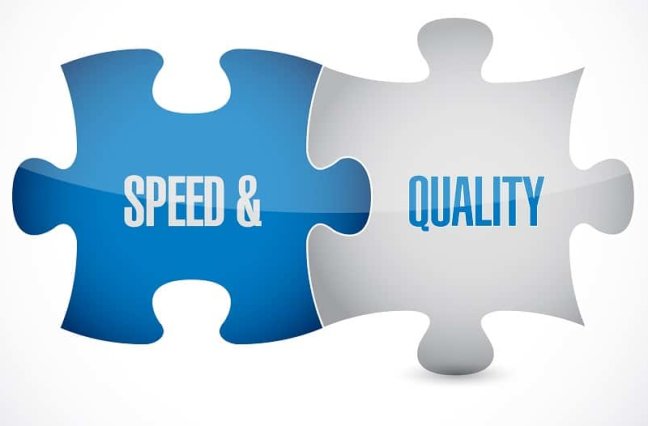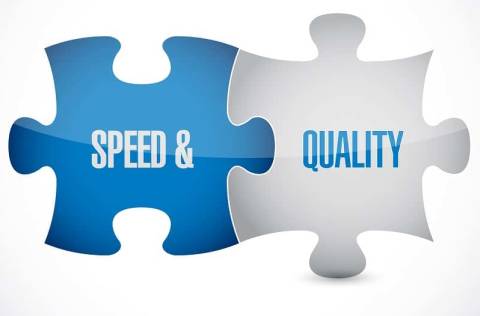AI is reshaping retail CX, but old habits die hard
Retail faces rising CX pressures. AI adoption grows, but manual processes and outdated feedback keep brands from meeting customer expectations. Read o...
Solutions
Products
Ingest omnichannel customer interactions, from audio and screens to surveys, for complete visibility and analytics.
AI virtual agents, real-time multilingual translation, and event-based customer feedback drive smarter, personalized CX initiatives.
Customers
Solutions
Products
Customers
Resources
Company
The Team at CallMiner
June 23, 2020


Updated October 15, 2021
Quality assurance, or QA, metrics refer to the data and facts your company uses to measure performance. Interestingly, QA metrics can vary significantly by industry, since they reflect performance as defined by that industry.
For example, QA metrics for software development could measure production cycles and average costs, while QA metrics for a carpentry business could track costs based on wood type and warranty requests (product failures). Every industry has its own benchmarks for customer satisfaction and performance.
For contact centers, common quality assurance metrics include: Average Speed of Answering (ASA), First-Call Resolution (FCR), Average Handle Time (AHT), Customer Satisfaction Score (CSAT), Net Promoter ScoreSM (NPS), and Customer Effort Score (CES).
The first step in improving your QA metrics, is to define “quality” in the first place: What is the goal or purpose of your quality assurance program? For example, are you working to improve the customer experience, increase customer satisfaction, and boost performance management [for your agents]?
Download our guide on how speech analytics can help improve CX!
From there, you must establish which call center QA metrics best align with your goals. In other words, what data and analytics will best measure your quality of service? Then, establish methods to record, track, and analyze these metrics.
Your call center performance metrics will depend largely on your goals. To get started, let’s look at those common contact center QA metrics we mentioned above:
Let’s work backwards for a moment. Most contact centers would agree that, given the same successful resolution, customers would prefer to spend less time on the phone. So, let’s take a look at two examples that work toward this goal:
Talk Time: With the help of CallMiner Eureka, one company was able to identify deficiencies in call routing – essentially, getting customers connected to the right rep – and as a result, were able to make changes that netted a reduced talk time of 82 seconds per call. That goes straight to the heart of your CES – reducing the effort your customer must put in, to achieve a desired result. What’s more, these changes also enabled the organization to handle a 12% increase in calls, without having to hire more agents.
Average Handle Time: Another company used CallMiner Eureka to identify long silence blocks during calls – they happened as agents waited for the system to respond to voice prompts – that were causing longer-than-necessary calls, and thus increasing customer frustrations. Once identified, the company handed the problem off the IT; one quick fix, and overnight the company reduced AHT by 11 seconds.
The major goal of call center QA metrics is to continually refine and improve customer satisfaction. Along the way, however, you’ll find that you naturally boost efficiency, call center productivity, and reduce costs:
QA metrics can be a challenging beast to tackle, especially when it comes to tracking them. Luckily, technology is working to make this challenge easier, with robust conversation analytics software.
This kind of software is designed specifically for contact centers, and allows you to establish parameters for data collection, source from any types of data (ex. emails, chat, audio calls, surveys, CMS messages, etc.), auto-analyze these interactions for established metrics, and then provide multichannel analysis with immediate insight into your data.
So, you have that handled. But there are other challenges: How do you coach to better performance, without consequences for poor performance? How do you coordinate your entire team around the same quality goals? How do you establish attainable goals?
As call center QA metrics become clearer and easier to understand, and as deficiencies are revealed, these are challenges your company must tackle.
QA metrics best practices are all about consistency – doing the same things, over and over, forever, while constantly refining your methods to achieve better results.
Always keep your customer in mind. In the big picture, what would make for a better omnichannel customer experience? When you know that, backtrack to the data that would prove that better experience. Then, backtrack again to how you can work toward the data that will mark that better experience.
Quality Assurance, or QA, metrics refer to the data that is tracked and used to quantify contact center agent performance. While they vary by industry, QA metrics typically focus on conversation-handling efficiency and creating a better omnichannel customer experience. Common quality assurance metrics include: Average Speed of Answering (ASA), First-Call Resolution (FCR), Average Handle Time (AHT), Customer Satisfaction Score (CSAT), Net Promoter Score (NPS), and Customer Effort Score (CES).
The role of call center QA refers to manage the standards and processes that guide agents in delivering the best possible customer outcomes. It is also responsible for ensuring regulatory compliance and adherence to local privacy laws.
For contact centers that leverage conversation intelligence technology call quality is measured by the specific standards established by each individual organization as measured and analyzed by that technology. These standards typically center around the efficiency with which the call is handled, the successful resolution of the issue that prompted the call, and the resulting level of satisfaction felt by the customer who placed the call.

As a leader among speech analytics vendors, CallMiner offers industry-leading omnichannel contact center solutions that drive call center optimization and improve business performance metrics. CallMiner’s conversation analytics technology captures and analyzes 100% of customer conversations across all channels, providing insight that can drive call center performance metrics and enhance omnichannel support. CallMiner simplifies customer touchpoint mapping with an automated journey map tool that delivers clearer understanding of the customer’s mindset and emotions. And automated performance scoring and detailed, real-time analytics of every conversation make it easy to monitor performance, implement call center best practices, and support the work from home call center agent.